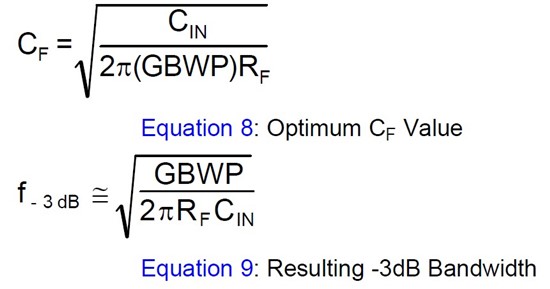Hi TI engineers,
Currently I am designing a low noise high speed TIA, and I am reading one of the TI documents -- "Transimpedance Considerations for High-Speed Amplifiers", in the part of noise considerations, I encountered an unfamiliar term in the input referred noise current.
The noise analysis circuit is as following:
The unfamiliar term is tagged out with red square in the following:
It seems to me that it is a noise current on the source capacitance, however, why there would be a "\sqrt{3}" in the demoninator? Could anyone explain this to me?
Apart from that, in this noise analysis, no feedback capacitor is used. If a feedback capacitor is added parallel to the feedback resistor, how would the noise current be in this case?
Thank you very much!
Best regards,
Zhao







